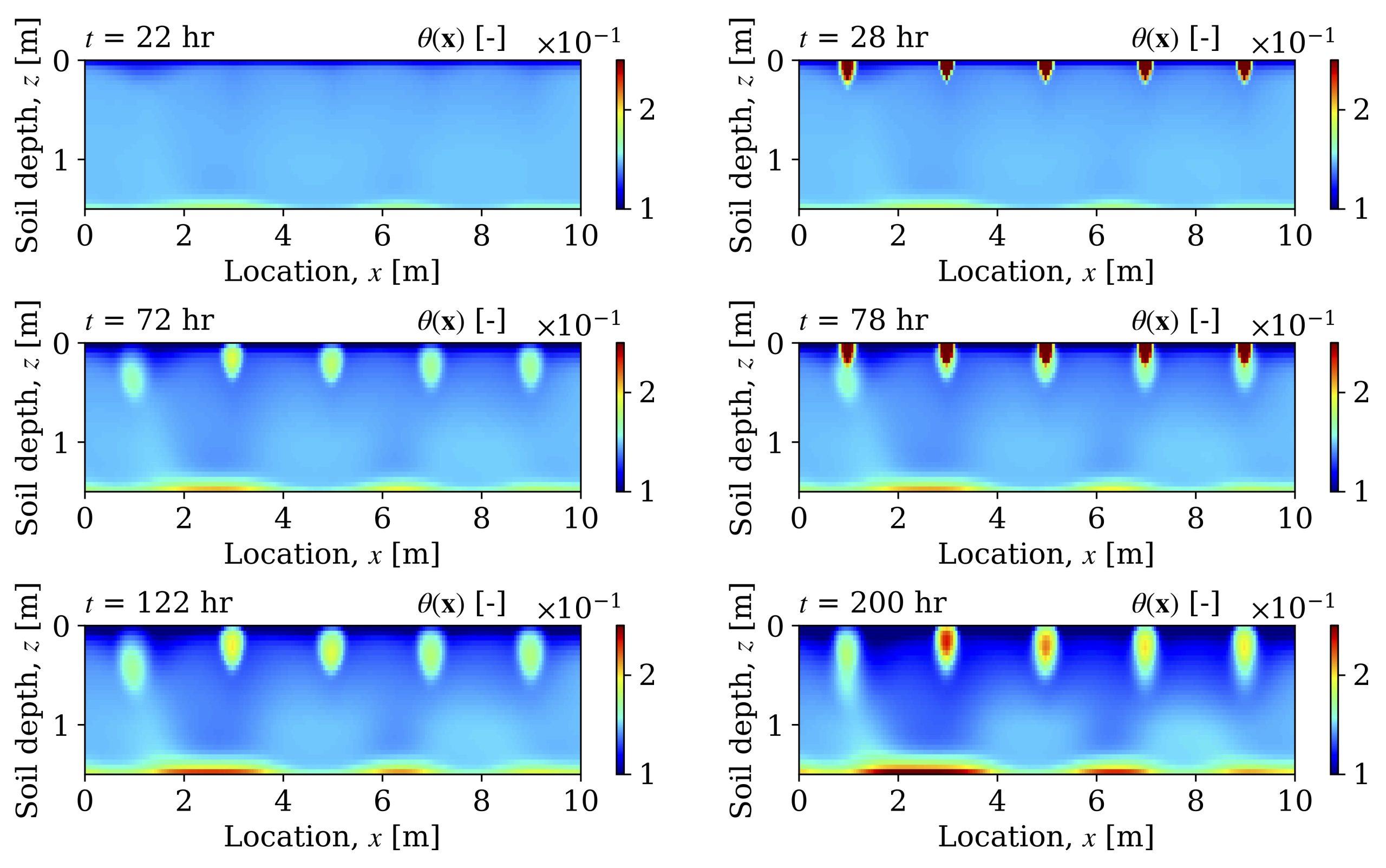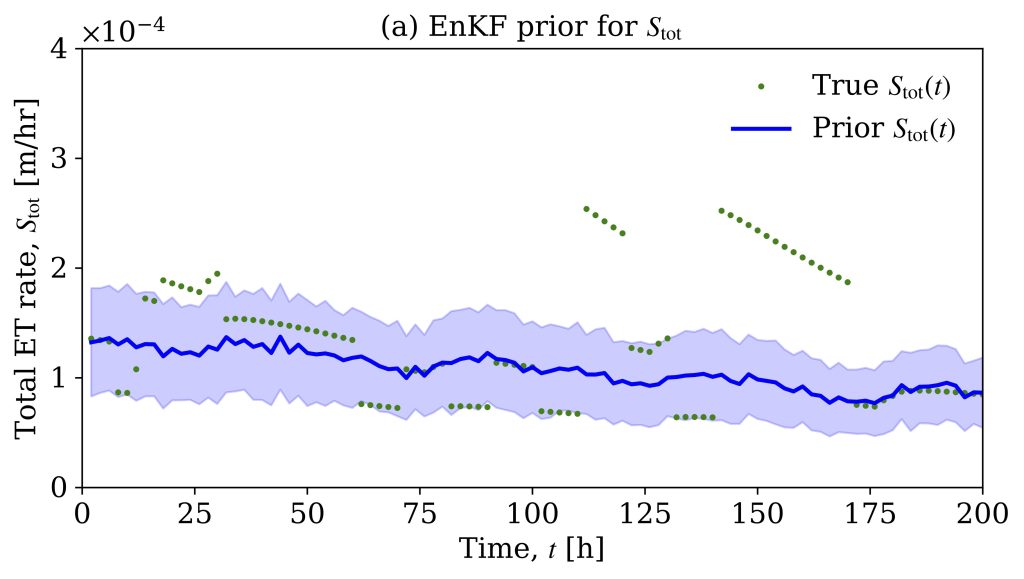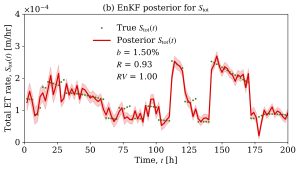 Smart agriculture leverages advanced data collection and analysis technologies to optimize water use and maximize crop yields. Central to this approach is the use of soil-moisture sensor networks, which deliver critical data to improve predictions of infiltration rates, wetting depth, and, most importantly, evapotranspiration (ET) rates. Our research focuses on refining ET estimation—a key factor in optimizing irrigation and promoting sustainable water management.
Smart agriculture leverages advanced data collection and analysis technologies to optimize water use and maximize crop yields. Central to this approach is the use of soil-moisture sensor networks, which deliver critical data to improve predictions of infiltration rates, wetting depth, and, most importantly, evapotranspiration (ET) rates. Our research focuses on refining ET estimation—a key factor in optimizing irrigation and promoting sustainable water management.
Bayesian data assimilation techniques have proven highly effective for parameter estimation across various applications. By employing efficient approximations of the Bayesian update, we have refined methods like the ensemble Kalman filter (EnKF). Our innovative techniques achieve a two-order-of-magnitude increase in computational efficiency without compromising prediction accuracy, representing a significant advancement over existing EnKF methodologies.
Building on these strategies, we also investigate how microbial activity can be regulated through optimized irrigation scheduling, demonstrating significant water conservation compared to traditional approaches that lack sensor-driven data and advanced algorithms.


Selected Publications
- Li and D. M. Tartakovsky, “Fast and accurate estimation of evapotranspiration rates for smart agriculture.”, Water Resources Research, 59(4), doi: 10.1029/2023WR034535, 2023. Featured in Stanford Daily & Stanford News. PDF
- Li et al., “Estimation of evapotranspiration rates and root water uptake profiles from soil moisture sensor array data.”, Water Resources Research, 56(17), doi:10.1029/2021WR030747, 2021. PDF
